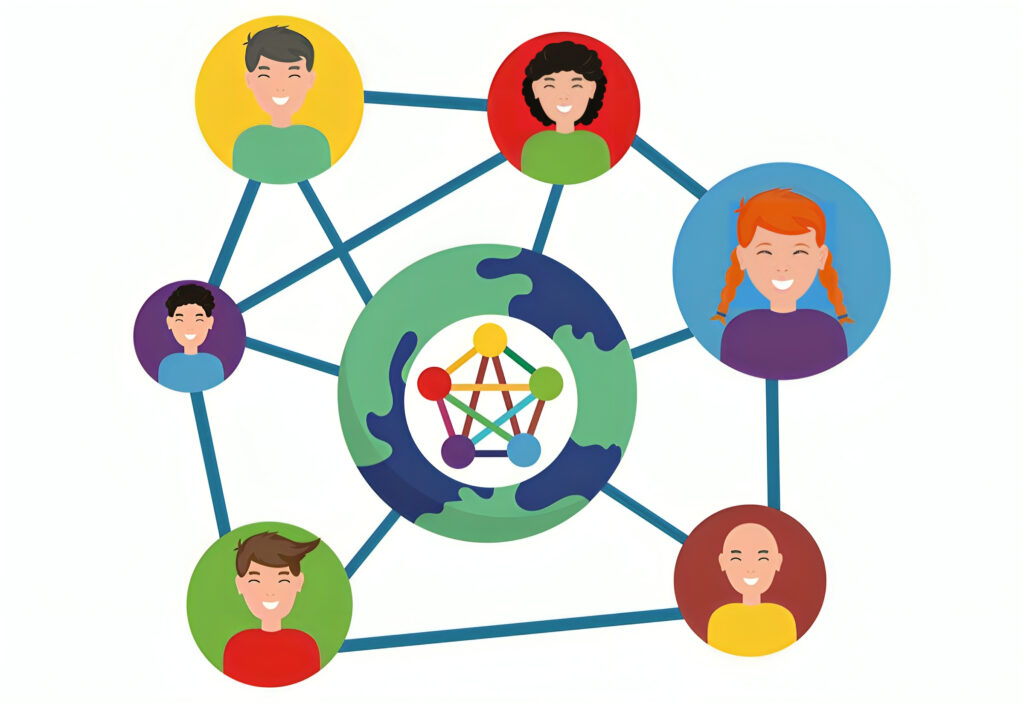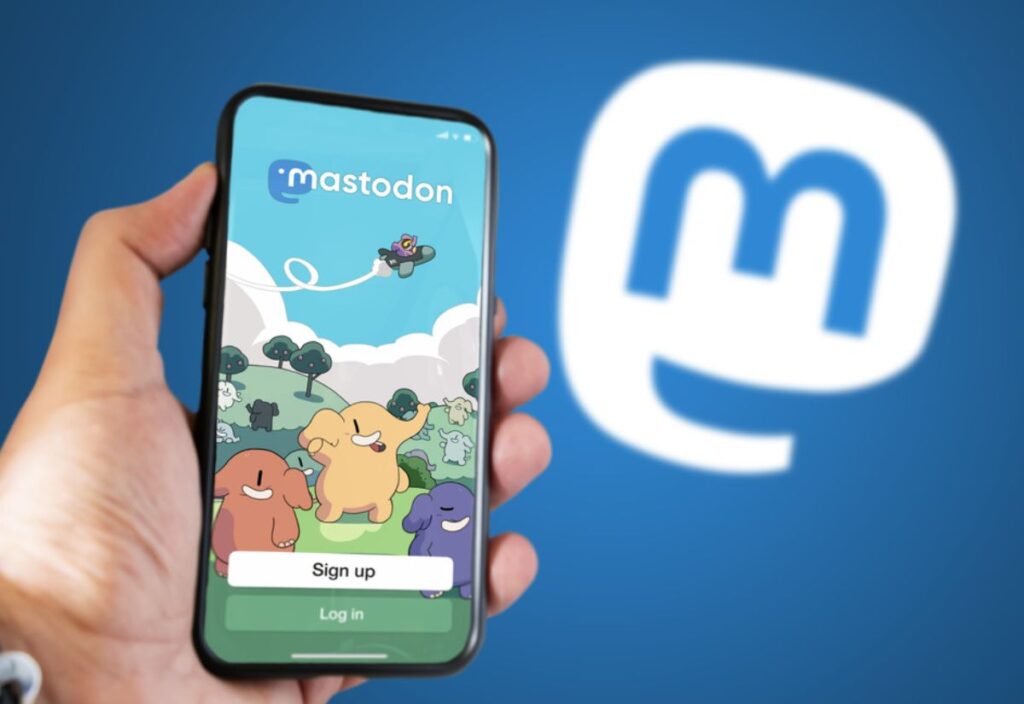Imagine a social media landscape where you’re not just a user but a citizen. A place where your data isn’t harvested and sold, and algorithms don’t manipulate what you see. That’s the promise of decentralized social media, and it’s having a moment.

Unlike the Facebooks and Xs of the world, decentralized social media (often called “DeSo”) isn’t controlled by a single company. It’s more like a community park — built and maintained by its users, with everyone having a say in the rules. This power shift brings a whole new set of features and functionalities to the table. Let’s dive in and see what DeSo is all about.
Under the hood: How does decentralized social media work?
So, how does DeSo avoid the pitfalls of traditional social media and how can you use it to drive traffic to your posts? The secret sauce lies in decentralization, achieved through two main technologies.
Blockchains
Remember those digital ledgers that power cryptocurrencies? Blockchains can also be used to store social media data. Every post, message and profile is like a block on this chain, replicated across a network of computers. This makes it tamper proof — no single entity can alter or delete your information.
Peer-to-peer (P2P) networking
Think of it like a digital game of telephone but instead of a single server passing messages along, users connect directly with each other. This distributes the workload and makes the network more resilient to outages.
Now, these technologies might sound complex but the user experience can be quite familiar. Decentralized social media platforms often look and feel similar to the Facebooks we’re used to. You can post updates, share photos and chat with friends. The key difference lies in ownership and control.
Welcome to the Fediverse: A universe of decentralized platforms
Decentralized social media isn’t one giant platform but rather a collection of interconnected communities called the “Fediverse.” Each platform within the Fediverse focuses on a specific niche or has a unique feature. A strong presence in the Fediverse can be just as good as a strong presence on Facebook, to gain followers and traffic to your sites. Here are a few examples to get you started.

Mastodon
Often referred to as the “Twitter of the Fediverse,” Mastodon lets you post short messages with images and videos. But unlike Twitter, it’s open-source, meaning anyone can contribute to its development. There are also thousands of independent Mastodon servers, each with its own vibe and focus. Brilliant Bloggers has its own Mastodon server. BB members can connect to the Fediverse via this server. Connect with Jenn Allen to get started.

Pixelfed
Calling all photography enthusiasts: Pixelfed is an Instagram-like platform specifically designed for sharing photos. It features a clean interface and focuses on user experience without intrusive ads or algorithms.
PeerTube
Tired of those pre-roll ads interrupting your YouTube flow? PeerTube is a decentralized video-sharing platform where users can host their own content. This allows for more control over content moderation and monetization. You can gain huge and loyal followings on PeerTube, and while it isn’t monetized, it can drive traffic and build up your fan base.
Mobilizon
Looking to organize events or rallies? Mobilizon is a decentralized event management platform that allows users to create events, invite others and track attendance.
These are just a few examples, and the Fediverse is constantly evolving. New platforms are popping up all the time, catering to diverse interests and needs.
But wait, there’s more! Exploring features of the Fediverse
Beyond the core concept of decentralization, the Fediverse offers some interesting features that set it apart from traditional social media. Here are a few to keep in mind.
Focus on content
Decentralized platforms often prioritize content over algorithms. This means you’re more likely to see posts from people you follow, rather than curated feeds based on your past behavior.
Emphasis on community
The Fediverse fosters a stronger sense of community than traditional platforms. Users often have a say in how platforms are governed, leading to a more collaborative environment.
Monetization on your terms
Some decentralized platforms allow users to monetize their content directly through cryptocurrency or other means. This puts the power to earn in your hands, not the platform’s.
So, what’s the catch? Is decentralized social media right for you?
Decentralized social media offers a compelling alternative to the status quo. However, it’s important to be aware of some potential drawbacks.
Learning curve
Decentralized platforms can have a steeper learning curve compared to traditional social media. Finding the right platform, understanding its features and navigating the Fediverse can take some time and effort.
Smaller user base
Decentralized platforms haven’t reached the critical mass of users seen on mainstream social media. This means you might not find all your friends and family there just yet. However, getting your foot in the door and getting established now can only benefit you in the long run.
Technical challenges
Decentralized technology is still under development. You might encounter occasional bugs or glitches compared to the polished interfaces of big tech platforms.
Despite these drawbacks, DeSo offers a glimpse into a future where users are in control. It’s a space where privacy is respected, content isn’t manipulated and communities thrive based on shared values. If you’re looking for a more democratic and user-centric social media experience, then the Fediverse might just be your cup of tea.
Final words
So, is decentralized social media the future? It’s too early to say for sure. But it offers a compelling alternative to the current social media landscape, one that prioritizes user control, privacy and open communication. If you’re looking for a more empowering way to connect online, the Fediverse might just be worth checking out. One thing is for sure — it won’t cost you more than a bit of time to build your presence on any of these platforms. What have you got to lose?
Ready to take the plunge? There are plenty of resources online and in Brilliant Bloggers to help you get started with decentralized social media. With a bit of exploration, you might just find a new online haven that feels more like a community garden and less like a corporate farm.
